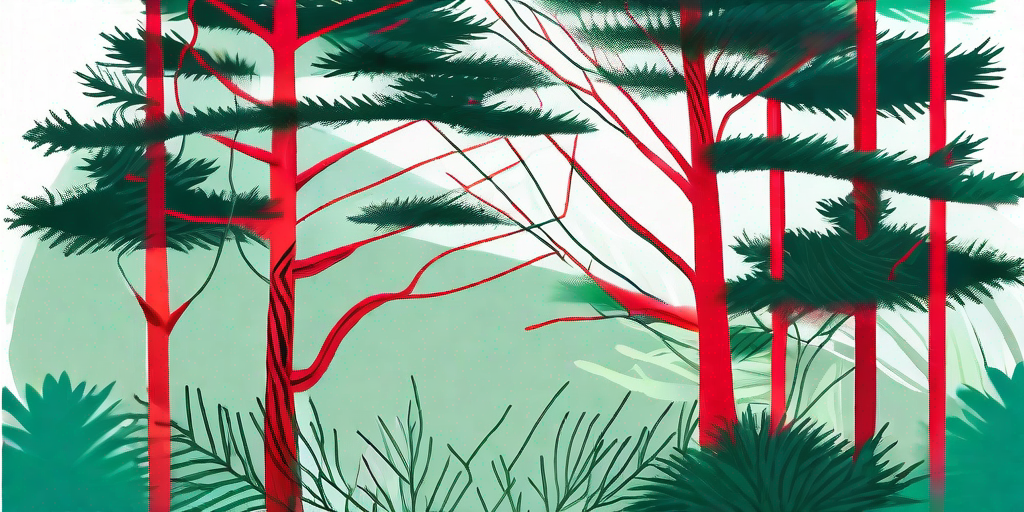
Welcome to the world of the Japanese Yew, a tree that's as mysterious as it is enchanting. This evergreen, native to Japan, is more than just a pretty face in the forest. It's a tree with a story, a history, and a whole lot of secrets. So, buckle up, tree-huggers and botany buffs, as we embark on a journey to unveil the mysteries of this captivating conifer.
The Enigmatic Evergreen: An Introduction to the Japanese Yew
First things first, let's get acquainted with our subject of interest. The Japanese Yew, scientifically known as Taxus cuspidata, is an evergreen tree that can reach up to 20 meters in height. It's a slow grower, but like a fine wine, it gets better with age. And by better, we mean it can live for more than a thousand years. Now, that's what we call a tree-mendous lifespan!
But, what makes this tree so special? Well, it's not just about its longevity. The Japanese Yew has a rich cultural and medicinal history, and it's also a popular choice for bonsai enthusiasts. So, whether you're a history buff, a health nut, or a bonsai beginner, there's something about this tree that's bound to pique your interest.
The Cultural Significance of the Japanese Yew
In Japan, the Yew tree holds a special place in the hearts of the people. It's often found in sacred groves around Shinto shrines, symbolizing longevity and immortality. The tree's wood is also used to make Noh masks, a key element in traditional Japanese theater. So, next time you're watching a Noh performance, remember to appreciate the tree behind the mask!
But the cultural significance of the Japanese Yew isn't confined to Japan. In the West, it's a popular choice for Christmas decorations. Its dark green foliage and red berries make it a festive favorite. Just remember, while the tree may look inviting, its leaves and seeds are toxic if ingested. So, keep it out of reach of children and pets, and maybe opt for a plastic version if you're prone to snacking on your decorations!
The Medicinal Magic of the Japanese Yew
Despite its toxicity, the Japanese Yew has a long history of medicinal use. Its bark, needles, and seeds have been used in traditional medicine to treat a variety of ailments. But, before you start brewing a batch of yew tea, it's important to note that the tree's medicinal properties are best left to the professionals.
In recent years, the Japanese Yew has gained attention in the field of cancer research. A compound found in the tree's bark, known as paclitaxel, is used in chemotherapy drugs to treat various types of cancer. So, while the tree may be toxic, it also holds the potential to save lives. Talk about a double-edged sword!
Caring for a Japanese Yew: A Guide for Green Thumbs
Now that we've covered the basics, let's delve into the nitty-gritty of caring for a Japanese Yew. Whether you're planning to grow one in your backyard or shape one into a bonsai, here's what you need to know.
Firstly, the Japanese Yew is a hardy tree that can tolerate a range of conditions. It prefers well-drained soil and can handle both full sun and partial shade. However, it's not a fan of waterlogged soil, so make sure your yew doesn't get its feet too wet. As for pruning, the tree is quite forgiving. You can trim it to your heart's content, making it a great choice for topiaries and hedges.
Planting a Japanese Yew: A Step-by-Step Guide
- Choose a location with well-drained soil and either full sun or partial shade.
- Dig a hole that's twice as wide and just as deep as the root ball of your tree.
- Place the tree in the hole, making sure the top of the root ball is level with the ground.
- Backfill the hole with soil, firming it gently around the base of the tree.
- Water thoroughly, and continue to water regularly, especially during dry periods.
And voila! You're now the proud parent of a Japanese Yew. Remember, patience is key. This tree is a slow grower, but give it time, and it will reward you with its beauty and charm.
FAQs about the Japanese Yew
- Is the Japanese Yew toxic?
- Yes, all parts of the Japanese Yew, except the aril (the red, fleshy part surrounding the seed), are toxic if ingested.
- Can the Japanese Yew be used for bonsai?
- Absolutely! Its slow growth and tolerance for pruning make it an excellent choice for bonsai.
- What conditions does the Japanese Yew prefer?
- The Japanese Yew prefers well-drained soil and can tolerate both full sun and partial shade.
So, there you have it, folks. The Japanese Yew, in all its evergreen glory. Whether you're captivated by its cultural significance, intrigued by its medicinal magic, or eager to add it to your garden, we hope you've enjoyed this deep dive into the secrets of this enchanting tree.















